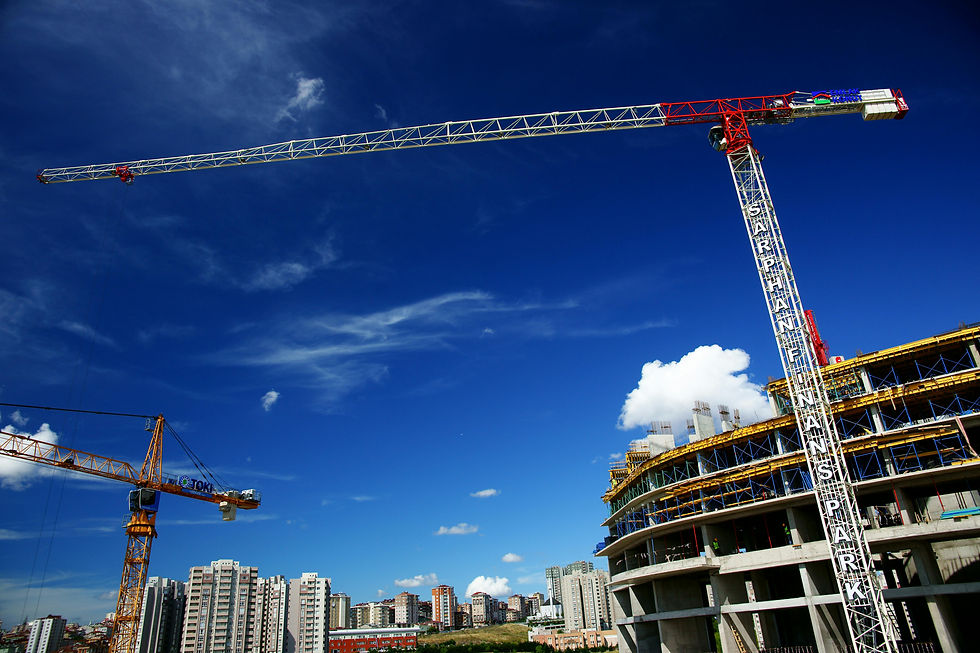Business Equipment - Should you Buy or Lease? Weighing the Options
- Symmetry Accounting & Tax Pty Ltd

- Aug 21, 2024
- 3 min read

In every industry, businesses rely on key equipment to function efficiently, from delivery trucks to specialized machinery. When the need arises to acquire new equipment or replace old ones, a pivotal question emerges: should you invest in purchasing or opt for leasing?
This decision extends beyond just initial costs. It involves careful consideration of your business’s financial health, long-term goals, and operational needs. Here, we’ll break down the advantages and drawbacks of both purchasing and leasing, explore the alternative of business asset financing, and offer insights to guide your decision-making process.
The Case for Buying Equipment: Pros and Cons
Advantages:
Asset Ownership: Purchasing equipment means it becomes a business asset, enhancing your company’s financial portfolio. Ownership also allows for full control over the equipment’s use and future resale.
Tax Relief Opportunities: Owning equipment can lead to significant tax savings, as capital allowances often apply to these purchases.
Cost-Effectiveness Over Time: Although the initial investment is substantial, the absence of ongoing lease payments makes ownership more economical in the long run.
Disadvantages:
High Upfront Costs: The significant capital required for purchasing can strain your financial resources, especially for small businesses.
Depreciation and Outdated Technology: Owned equipment depreciates and may become obsolete, necessitating future replacements.
Potential Debt Increase: Financing equipment purchases may add to your liabilities, impacting your business’s credit standing.
The Benefits and Drawbacks of Leasing Equipment
Benefits:
Lower Initial Investment: Leasing provides access to essential equipment with minimal upfront costs, making it a viable option for businesses with limited capital.
Improved Cash Flow: Monthly lease payments spread the cost, helping to maintain a healthy cash flow for other business needs.
Access to the Latest Innovations: Leasing agreements often include options to upgrade to newer models, keeping your business at the cutting edge without hefty expenditures.
Tax Advantages: Lease payments are typically deductible as business expenses, reducing your taxable income.
Drawbacks:
No Ownership: Leasing means you won’t own the equipment, and you may need to return it or pay a residual value at the end of the lease.
Higher Long-Term Expense: Over time, lease payments can add up to more than the equipment’s purchase price, especially if the lease is extended.
Risk of Repossession: Missed lease payments could result in the loss of equipment, potentially disrupting business operations.
Business Asset Financing: A Balanced Approach
For those who wish to own equipment but are concerned about upfront costs, business asset financing offers a compromise. This method allows businesses to purchase equipment while spreading the payment over time, combining the benefits of ownership with financial flexibility.
Pros:
Ownership with Manageable Payments: Financing lets you acquire equipment without a large initial outlay, offering the perks of ownership, including tax benefits.
Flexible Payment Terms: Financing plans can be tailored to your cash flow, ensuring that payments are manageable.
Cash Flow Preservation: By spreading costs, you avoid depleting cash reserves, allowing for investments in other areas of your business.
Cons:
Interest Costs: Financing involves paying interest, which increases the total cost of the equipment.
Impact on Credit: Taking on additional debt can affect your business’s credit rating and financial stability.
Factors to Consider in Your Decision
When deciding whether to buy, lease, or finance business equipment, several critical factors should guide your choice:
Financial Condition: Assess your cash flow and overall financial health to determine what your business can afford.
Equipment Lifespan and Upgradability: Consider whether the equipment will remain useful for the long term or if frequent updates are needed.
Tax Implications: Consult with a tax professional to understand how buying, leasing, or financing will affect your tax liabilities.
Future Growth Plans: Factor in your business’s expansion goals and whether you need flexibility in upgrading equipment.
Maintenance Responsibilities: Remember that ownership includes maintenance costs, whereas leasing may cover these expenses.
Resale Potential: Owning equipment offers the possibility of recouping some investment through resale, unlike leasing.
Practical Examples: When to Purchase, Lease, or Finance
Let’s look at some scenarios to illustrate when each option might be the best fit:
New Business with Limited Funds: Leasing can provide the necessary equipment without exhausting capital, ideal for startups.
Established Company with Reliable Revenue: Purchasing might be the best choice for businesses with stable income and sufficient reserves, offering long-term savings.
Expanding Business with Growing Needs: Financing allows for equipment acquisition while supporting growth, maintaining a balance between investment and cash flow.
Making the Best Decision for Your Business
Choosing between purchasing, leasing, or financing equipment is a nuanced decision that depends on your business’s unique circumstances. By understanding the pros and cons of each option and considering the critical factors outlined, you can make a well-informed decision that aligns with your business goals.
For tailored advice and more detailed guidance, feel free to schedule a consultation with our experienced team. We’re here to help you make the best choice for your business’s success.












Comments